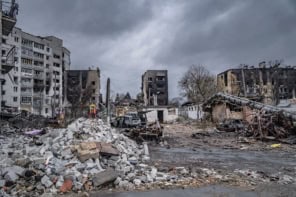
The strength of the urban heat island (UHI) effect varies both between and within cities, and is usually greatest in poorer neighbourhoods, say researchers in the US and Singapore. Tirthankar Chakraborty, at Yale School of Forestry and Environmental Studies, and colleagues combined census data and satellite imagery to map the relationship between the UHI and income in 25 cities around the world. They found that low socioeconomic status often goes hand in hand with a greater density of built-up structures and an absence of vegetation – two factors that amplify the UHI effect. The result means that poorer residents could be more vulnerable to health problems that are exacerbated by heat stress.
The impact of industrial civilization on the climate is usually discussed in terms of the planet-wide changes caused by greenhouse-gas emissions. But as a growing proportion of the world’s population resides in towns and cities – more than two-thirds by 2050 – increasing numbers of people are experiencing another, more local effect.
The UHI effect arises because built-up areas, dominated by concrete and tarmac, absorb and release solar radiation differently from the countryside. When urban environments, with their artificial surfaces, replace trees and other vegetation, they also lose the benefit of evaporative cooling, which moderates the temperature in rural landscapes. Combined with the heat produced directly by human activity, from transportation or air-conditioning, for example, this means that cities are often a few degrees warmer than their surroundings. While this can be a benefit when it mitigates extreme cold snaps in the winter, by intensifying summer heatwaves, it can have major adverse effects.
“Because of the way heat stress works, incremental increases in heat exposure (both acute and chronic) can lead to disproportionately worse health outcomes for urban residents, especially those in hot and humid climates,” says Chakraborty.
To map the severity of the effect, Chakraborty and colleagues used measurements of the land surface temperature based on satellite observations of emitted infrared radiation. The measurements covered 25 cities from a range of climatic zones, with each city divided into between 12 (Berlin, Germany) and 297 (Detroit, US) discrete neighbourhoods. The average income for each neighbourhood came mainly from census and survey data all compiled for the Urban Environment and Social Inclusion Index.
The researchers compared the daytime and night-time temperatures in each neighbourhood with a local reference value, which they took to be the average from the non-urban areas within each city’s boundary. The terrain composing these non-urban areas included vegetation of various types, bare soil and permanent snowpack. They also used the ratio of reflected red and near-infrared light to define the vegetation index for each neighbourhood, and the ratio of near-infrared to short-wave infrared radiation as a proxy for built-up density.
Chakraborty and colleagues found that in 18 of the 25 cities studied – including both poorer and richer cities – the strongest UHI effect was seen in low-income neighbourhoods. Variation in vegetation coverage between neighbourhoods was usually the cause, but in coastal cities there was another factor: high-income areas are often found near the waterfront, while low-income areas are in the hinterland, away from the sea’s moderating effect.
“From a policy perspective, the UHI is critical because, unlike background temperature, UHI is manageable,” says Angel Hsu of Yale-NUS College in Singapore. This management will be even more important in the future, because not only is the urban fraction of the world’s population increasing, but, according to Hsu, for some cities, the UHI effect itself is becoming stronger.
Chakraborty and colleagues reported their findings in Environmental Research Letters.



